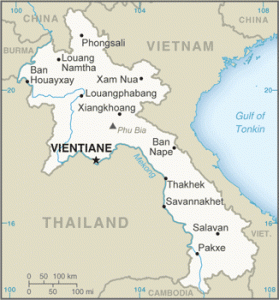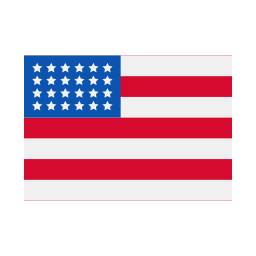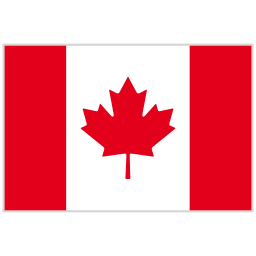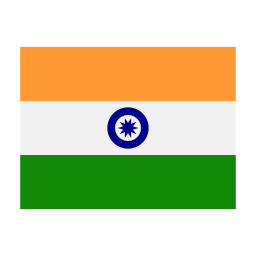LAOS – GENERAL INFORMATION

GEOGRAPHY
Laos is a landlocked country bordered to the north by China, to the east by Vietnam, to the south by Cambodia and to the west by Thailand and Myanmar. Apart from the Mekong River plains along the border of Thailand, the country is mountainous, particularly in the north, and in places is densely forested. The mountains stretch across the north, except for around Vientiane and the Plain of Jars in Xiangkhoang Province.
HISTORY
Laos became a republic in December 1975 when the king abdicated and the monarchy was abolished. A period of economic reform began

after that. Laos depended on Soviet aid right up to the collapse of the Soviet Union in 1991. Now, although the government no longer runs the economy centrally, there is no move toward a multi-party system.
THE PEOPLE
The Lao are an ethnic sub-group of Tai/Dai in Southeast Asia. The vast majority of Lao people live in Laos and the Isan region of Thailand. The majority of the Lao people are Buddhists. The Laos-Lum (Valley Laos) people follow the Hinayana (Theravada) form of Buddhism. The religions of the Laos-Theung (Laos of the mountain tops) range from traditional Confucianism to animism and Christianity.
SOCIAL CONVENTIONS
Religious beliefs should be respected. Lao people should not be touched on the head and women should not touch monks. Handshaking is not that usual; Lao people greet each other with their palms together and a slight bowing of the head. Take care when discussing politics and related subjects in conversation so as not to cause offence.
Laos is a Buddhist country and guests should dress accordingly. Shorts or revealing clothes are never acceptable. For women, sarongs work well in the heat as do long-sleeved light cotton shirts. Shoes must be removed when entering a religious building or somebody’s home. It is a legal requirement to carry an ID document or a passport, and fines for not having one for presentation on demand can be high. The Lao government prohibits sexual relationships, including sexual contact between foreign citizens and Lao nationals, except when the two parties have been married in accordance with Lao family law. Penalties for failing to register a relationship range from fines to imprisonment.
LANGUAGES
The official language is Lao; however, many tribal languages are also spoken. French, Vietnamese and some English are spoken.
GOVERNMENT
Laos’s government is the framework of a single-party socialist republic. The only legal political party is the Lao People’s Revolutionary Party (LPRP). The head of state is President Choummaly Sayasone, who also is LPRP general secretary.
The head of government is Prime Minister Thongsing Thammavong. Government policies are determined by the party through the all-powerful nine-member Politburo of the Lao People’s Revolutionary Party and the 49-member Central Committee. Important government decisions are vetted by the Council of Ministers.
TIME ZONE
Laos is 11 hours ahead of Eastern Standard Time (EST).
ELECTRICITY
Electricity in Laos is 230 Volts, alternating at 50 cycles per second. If you travel to Laos with a device that does not accept 230 Volts at 50 Hertz, you will need a voltage converter.
CLIMATE
Throughout the country, the climate is hot and tropical, with the rainy season between May and October when temperatures are at their highest, up to 35°C. The weather is very similar to that of northern Vietnam. The dry season runs from November to April, which is the best time to visit as the temperature is at its most comfortable. However, the mountainous areas can be very cold at this time, down to around 5°C. Across Asia the annual monsoon is becoming ever more difficult to predict, possibly as a result of global warming. This plays havoc with farming and occasionally travel plans too. As a guide, the average rainfall in the capital Vientiane is about 1,700 mm, although in the north of Laos and the highlands it is far wetter, with more than 3,000 mm each year.
WHAT TO WEAR
Lightweights and rainwear with warmer layers are suitable from October to March and for upland areas. If you go during the monsoon or summer months, take along lightweight waterproofs, an umbrella and some leech oil for trekking. Take a swimming costume for hotel swimming pools too.
LOGISTICAL
Entry & Exit Requirements:
You must have both a passport and visa to enter Laos, and your passport must also have at least six months validity remaining beyond the date that you enter Laos. You can get a visa on arrival in Laos if you are traveling for tourism, have two passport-size photographs and pay $35 at the following ports of entry: Wattay Airport, Vientiane; Pakse, Savannakhet, and Luang Prabang Airports; Friendship Bridge, Vientiane and Savannakhet; Nam Heuang Friendship Bridge, Sayabouly Province; and border crossings at Boten-Mohan, Dansavan-Lao Bao, Houaysay-Chiang Khong, Thakhek-Nakhon Phanom, Nong Haet-Nam Kan, Nam Phao-Kao Cheo, Veun Kham-Dong Calor, and Vangtao-Chong Mek. You can also get a visa on arrival at the Tha Naleng train station in Vientiane, which connects to the train station in Nongkhai, Thailand. If you obtain a visa from a Lao embassy or consulate prior to your travel to Laos, you may also enter at the following international entry points: Napao-Chalo, Taichang-Sophoun, Pakxan-Bungkan, and Xiengkok.
If you get your visa on arrival in Laos, you will generally be allowed to stay in Laos for 30 days after you arrive. If you were born in Laos, you may be admitted for 60 days or longer. You can extend your 30-day tourist visa up to an additional 60 days for a fee of $2 per day through the Department of Immigration in Vientiane. If you overstay your visa in Laos, you risk arrest and you will be fined $10 for each day of overstay as you leave. The Lao government calculates visa fees and fines in U.S. dollars. Thai baht and Lao kip may sometimes be accepted for the fees but at unfavorable exchange rates. Additional information is available from the Lao National Tourism Administration.
If you enter Laos with a visitor (tourist) visa issued at a Lao embassy abroad, you will generally be allowed to stay in Laos for 60 days. If you wish to obtain a visa in advance, please contact a Lao Embassy or consulate. In the United States, you can get visa and other information about Lao entry requirements from the Embassy of the Lao People’s Democratic Republic, 2222 S St. NW, Washington, DC, 20008, tel: 202-332-6416, fax: 202-332-4923.
Business visas can only be arranged in advance. A company or individual “sponsor” must contact the Lao Ministry of Foreign Affairs (MFA) in Vientiane, request a visa for you, and offer a “guarantee.” Once the Lao MFA approves the request, the Lao MFA will send the approval to the Lao Embassy in Washington, D.C., and business travelers may then apply for a business visa. This process usually takes one to three months. After you arrive in Laos, your business visas can generally be extended for one month.
Do not attempt to enter Laos without valid travel documents or outside of official ports of entry. You should not cross the border between Laos and Thailand along the Mekong River except at official immigration check crossings. If you attempt to enter Laos outside of official ports of entry, you may be arrested, detained, fined, and deported.
Immigration offices at some of the less frequently used land border crossing points are not well marked. Make sure you complete all immigration and customs requirements when you enter or depart Laos. If you enter Laos without completing these formalities, you may be subject to fines, detention, imprisonment, and/or deportation.
In an effort to prevent international child abduction, many governments have initiated additional procedures at entry/exit points. These often include requiring documentary evidence of relationship, such as the child’s birth certificate, and permission for the child’s travel from the parent(s) or legal guardian not present. Having such documentation on hand, even if not required, may facilitate entry/departure. Information about dual nationality or the prevention of international child abduction can be found on our web site.
At Wattay Airport (Vientiane), Pakse Airport, Savannakhet Airport, and the Luang Prabang Airport, there is an international airport departure tax of US $10. This tax may be included in the price of the airline ticket, depending on the carrier. There is also a 5,000 kip (equivalent to approximately U.S. 60 cents) departure tax for domestic flights, which may be included in the price of the airline ticket, depending on the carrier. At the Friendship Bridge (Vientiane, Laos – Nong Khai, Thailand border crossing) there is an overtime fee after 4:00 pm weekdays and during weekends. Visit the Embassy of Laos web site for the most current information. For further information about customs regulations, please read our Customs Information page.
The U.S. Department of State is unaware of any HIV/AIDS entry restrictions for visitors to or foreign residents of Laos.
Embassy Locations:
U.S. Embassy Vientiane
19 Rue Bartholonie, That Dam
Vientiane, Laos
Telephone: + (856) (21) 267-000
Emergency After-Hours Telephone:
+ (856) (20) 5550-2016
Fax: + (856) (21) 267-190
http://travel.state.gov/content/passports/english/country/laos.html
Canadian Embassy
The Government of Canada has no resident representation in Laos. Services are offered through our Embassy in Bangkok, Thailand. For consular services, please contact the Australian Embassy in Laos.
http://embassy.goabroad.com/embassies-in/laos
HEALTH
Medical facilities and services in Laos are limited and do not meet Western standards. In Vientiane, U.S. citizens may wish to contact the Primary Care Center, also known as the Centre medical de L’Ambassade de France (CMAF), which is supported by the French Embassy. The CMAF is located on Khou Vieng Road across the street from the Green Park Hotel, tel. 856-21-214-150, or 856-20-5558-4617, or email. The Australian government also supports a fee-for-service clinic located at the Australian Embassy, which is located at Kilometer 4 on Thadeua Road, tel. 21-353-840. Both facilities have well-trained physicians who can handle routine and urgent health problems and provide travel medicine services. The Alliance Clinic, operated by the Wattana Hospital group from Thailand, is located in the Honda building near the airport. It has basic clinical services provided by Thai physicians.
U.S. citizens in Laos often seek medical care in Thailand. The Friendship Bridge linking Vientiane, Laos, to Nong Khai, Thailand, is open daily 6:00 a.m. to 10:00 p.m. Officials generally will allow travelers to cross after hours in cases of medical emergency. AEK International Hospital (tel: 66-42-342-555) and North Eastern Wattana General Hospital, both in Udorn, Thailand (tel: 66-1-833-4262), have English-speaking staff accustomed to dealing with foreign patients. Ambulances for both AEK International Hospital and Nong Khai Wattana Hospital have permission to cross the Friendship Bridge to collect patients from Vientiane. In Vientiane, the Setthatirat Hospital ambulance (tel: 021-413-720) can take patients to Thailand. The Department of State assumes no responsibility for the professional ability or reputation of these hospitals.
Counterfeit pharmaceuticals are a problem throughout Southeast Asia. Please be aware of this problem and purchase pharmaceuticals only through the most reputable pharmacies and with a physician’s prescription.
Avian influenza (H5N1) continues to be a concern in Laos. In Laos and other Southeast Asian countries affected by avian influenza, you should avoid poultry farms, contact with animals in live food markets, and any surfaces that appear to be contaminated with feces from poultry or other animals. For information on influenza, please refer to the Department of State’s Influenza Fact Sheet.
Please note: Some medications may not be permitted in the country. Please check if the medication you are bringing is permitted in the country you are visiting.
Information on vaccinations and other health precautions, such as safe food and water precautions and insect bite protection, may be obtained from the Centers for Disease Control and Prevention’s (CDC) hotline for international travelers at 1-800-CDC-INFO (1-800-232-4636) or via the CDC website at http://wwwnc.cdc.gov/travel. For information about outbreaks of infectious diseases abroad, consult the infectious diseases section of the World Health Organization (WHO) website at http://www.who.int/topics/infectious_ diseases/en/. The WHO website also contains additional health information for travelers, including detailed country-specific health information.
BANKS & CURRENCY
Lao Kip (LAK; symbol ₭) = 100 cents. Notes are in denominations of ₭50,000, 20,000, 10,000, 5,000, 2,000, 1,000, 500, 100, 50, 10, 5 and 1.
Thai Baht and US Dollars are the easiest currencies to exchange. They are also widely accepted in shops, markets and hotels in Vientiane and Luang Prabang.
Major credit cards are accepted in the more up market hotels and restaurants only in Vientiane and Luang Prabang. ATM’s are slowly being introduced, particularly in Vientiane, but do not rely on them. Travelers’ Checks have limited acceptance and often with a hefty commission charge. To avoid additional exchange rate charges, travelers are advised to take travelers’ checks in US Dollars or Thai Baht.
The import and export of local currency is prohibited. The import and export of foreign currency is unrestricted, subject to declaration of amounts more than US$2000 on arrival.
Banking hours: Mon-Fri 08:30am-4pm. Some banks remain open during lunch.
COMMUNICATION
Restricted International Direct Dialing is available. Country code: +856.
Cell Phone Usage:
Please contact your cell phone provider to determine whether your contract includes coverage in the country you are visiting. Depending on your contract you may have to add international services and/or country specific services.
ENTERTAINMENT
Food & Drink:
Dishes are a blend of Thai, Vietnamese and Chinese in flavor and presentation but Lao food lacks the variety that many of the cuisines from surrounding countries offer. The cheapest and easiest way to sample Lao food is from the stalls in the markets – as long as the food is fresh and hot it will be safe to eat. Traditionally, Lao food is very spicy – Lao people will often add chillies by the fistful and use heavy seasoning – but this kick is often tempered for the western palate. Fish sauce is often used to flavor dishes.
There are several fairly good French restaurants in Vientiane, catering mainly for the diplomatic community, and Luang Prabang, which has recently seen something of a culinary revival. In touristy areas the usual traveler fare will be available, so expect to see menus offering muesli, chow mien, pizza, burgers, sandwiches, curries, pancakes and fritters. Green tea is usually served weak and free in most restaurants, water tends to be filtered and providing it is, it will be safe to drink.
Specialities:
- Sticky rice (best eaten with fingers, simply roll it up to the size of a golf ball and pop in your mouth).
- Pho (white rice noodle soup, usually served with beef and/or pork although vegetarian versions are available). This is the typical food of Laos. If it’s a little plain Lao people will add in fish sauce, dried chillies etc to give it a kick.
- Laap(minced meat, fish or vegetables tossed in lime juice, garlic, onions, powdered rice and chillies, accompanied by sticky rice).
- Tam maal hung(Lao-style spicy salad of shredded papaya with lots of chilli, garlic, lime, fish sauce and palm sugar.).
- Khai phaan (weed from the Mekong River – a Luang Prabang speciality).
Note:
Lao breakfast is generally rice noodles. If noodles and meaty broth is not your thing for breakfast, French baguettes with sweet Lao coffee and khai (eggs) is possible in most places that cater to tourists, as are the ubiquitous traveler pancakes, cornflakes and takes on western cooked breakfasts. Eating out, unless at the very top restaurants, is very good value. Cappucinos and lattes are increasingly available and are often made with pasteurized milk that has travelled from Thailand.
Regional drinks:
Lao lao (rice whisky) is popular and there are two brands available.
Beer Lao is very popular.
NIGHTLIFE
It is illegal for a nightclub or bar to stay open later than 2330 and therefore to expect Vientiane to be on a par with other Asian capitals in terms of nightlife would be a misstep. Generally, the Lao nightlife is quiet and laid-back, usually involving a Beer Lao, a stunning sunset firefly display and an early night. However, there are two nightclubs of note in Vientiane – Future Nightclub and Highwayman both are fairly close to the airport and both often stay open later than they should.
Otherwise try the French Cultural Centre on The Lan Xang in Vientiane which often shows movies, and has music performances. Elsewhere in the capital, there are plenty of bars along the river, most of which stay open until 2300 or so – expect plenty of classic rock, cocktails and cheap beer. In Luang Prabang it’s the same story, although the city has the country’s first openly gay bar – Khob Chai. Note that the streets empty out early in Laos. Stumbling home drunk might not be a wise idea. Guesthouses close and bolt their doors accordingly too, so try not to get locked out.
SHOPPING
The markets in Vientiane and Luang Prabang are worth visiting. Silk, cotton fabrics, wood carvings, pottery, silver jewellery and handmade shirts are good buys. Lao sarongs (pha sin) and hill tribe bags are a popular souvenir. Although the majority of shops have fixed prices, bartering is still advisable for many items.
In Vientiane, it’s worth heading out to the weaving district of Ban Nong Bouathong, northeast of the city. Try the Phaeng Mai Gallery which sells beautiful Lao textiles. For something really smart, head to the American designer Carol Cassidy’s shop, Lao Textiles, which is internationally well-known. Here, you’ll find items that will fit in well at parties back home as well as on your travels. Lao weavers design the items and work in an attractive old French-Lao house. If buying clothes in Laos note that most fabrics are not machine washable as the dye runs. Nearby, opposite Talat Sao market, is the clumsily named Handicraft Products of Ethnic Groups- here you’ll find handicrafts from all across the family.
Luang Prabang is best known for its handicrafts, art, textiles and jewelry. In an old French mansion, Pathana Boupha Antique House is certainly worth a visit. There’s some beautiful silverwork and old photos for sale, mostly from the Lao owners’ private collection. It’s brilliant for browsing and for choosing an inspired, unusual gift. There are also plenty of small bookshops. L’Etranger Books & Tea is a lovely place to cool off or curl up with a book in. It sells both new and second-hand books mainly about Laos and Southeast Asi but head upstairs to the tea lounge and you can see local art displayed too. Another great spot to combine retail with tea is the Baan Khily Gallery, which sells Lao crafts and mulberry bark paper (sǎa). The friendly owner is often on-site and there’s an upstairs terrace which lends itself to chill-out time.
Shopping hours: Times vary but generally Mon-Sat 0800-1700 with private shops open longer hours. Some also open on Sunday.
BAGGAGE
Baggage rules for international and domestic air travel have changed much in recent years, differ from carrier to carrier and these days even may cover your on-board bags. Checking luggage may cost a separate fee or may be free depending on your personal status with the carrier. We therefore encourage you to read your ticket’s small print and/or contact your carrier for exact rules.
TIPPING
Gratuities are not included as a part of our service. However, we would like to reiterate that tipping is NOT mandatory and is entirely at your discretion, based on your level of satisfaction for the services that you have received. Having said that, most service providers do expect gratuity. We are pleased to provide you with the suggested guideline, that you may use at your discretion.
LAUNDRY
There is no public laundry on the streets. Laundry services are available in hotels and cruise ships, usually through the floor attendant or housekeeping. One-day dry cleaning and pressing services are offered at better hotels.
PHOTOS & VIDEOS
In some countries you must refrain from photographing sites such as Military bases and industrial installations. Also be aware of cultural sensitivities when taking pictures of or near churches and other religious sites. It is always courteous to ask for permission before taking photographs of people.
USE OF DRONES
The use of drones is being legislated by many countries. In some cases drones are already forbidden and their unauthorized use may carry severe penalties. If you plan to travel with a drone please contact the embassy or consulate of the country you wish to visit.




